Coin Press Machine
One-stop gold coin press solution provider

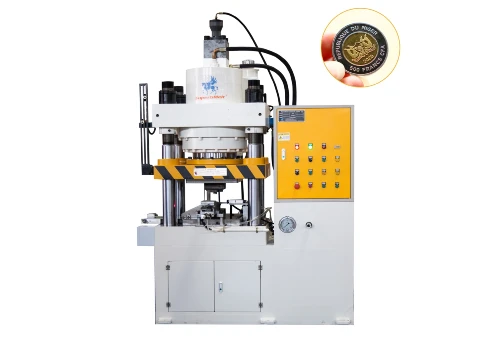
This hydraulic coin press machine comes with a steel fabricated body that is hydraulically operated and is specifically designed to mint gold and silver coins, as well as medals and bars. It leverages a force strong enough to press up to 150 tons of metal. It is best described as an upstroke coining press that delivers a RAM travel speed and features an extra hydraulic cylinder for return stroke. This means that by choosing this product, you will save energy hence cutting on electricity bill.
The machine lets you mint gold and silver metals and bars at a fair speed to meet the market demand. It comes with hydraulic power pack that consists of Piston Pump, relief valve, electric control panel board operated directional control valve, and standard hydraulic accessories. To get the most applicable features to meet your expectations, consider getting this product from reputable manufacturers such as SuperbMelt.
Our coin making machine can realize 1-1kg metal pressing, and you can choose 20-1000ton machines according to your production capacity, including manual, servo, and automatic equipment.
| Item | Unit | SPB-100TP | SPB-300TP | SPB-500TP | |
| Photo of Manual Coin Press | 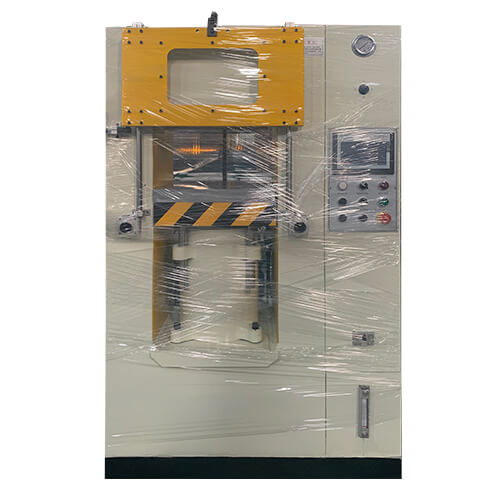 |
 |
 |
||
| Rated capacity | Ton | 100 | 300 | 500 | |
| Max. system pressure | Mpa | 25 | 24 | 25 | |
| Max. stroke of working table | mm | 110 | 150 | 150 | |
| Open height | mm | 320 | 380 | 450 | |
| Height of movable working table | mm | 960 | 1080 | 1185 | |
| Upward speed of movable working table | mm/s | 150 | 80 | 80 | |
| Returning speed of movable table | mm | 140 | 90 | 80 | |
| Movable working table size | L-R | mm | 420 | 580 | 710 |
| F-B | mm | 420 | 540 | 640 | |
| Overall dimension | L-R | mm | 920 | 1200 | 1440 |
| F-B | mm | 810 | 1165 | 1370 | |
| H | mm | 1650 | 1895 | 2080 | |
| Motor power | kw | 4kw | 7.5 | 15 | |
| Weight (Approx.) | kg | 1900 | 3300 | 5500 | |
| Item | Unit | SPB-100TS | SPB-300TS | SPB-500TS | |
| Photo of Servo Coin Press |  |
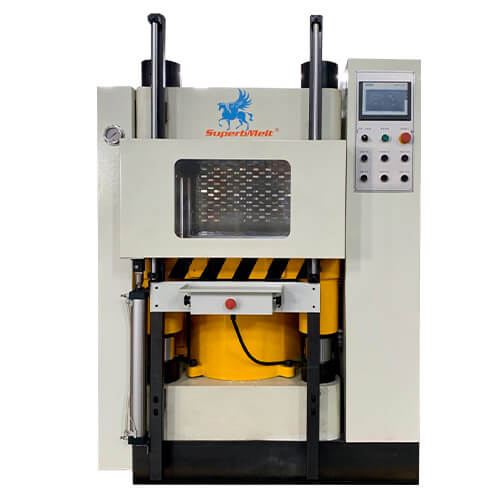 |
 |
||
| Rated capacity | Ton | 100 | 300 | 500 | |
| Max. system pressure | Mpa | 25 | 24 | 25 | |
| Stroke of movable working table | mm | 110 | 150 | 150 | |
| Height of movable working table | mm | 800 | 940 | 850 | |
| Open height | mm | 310 | 400 | 450 | |
| Workbench stroke speed | Approaching | mm/s | 160 | 210 | 215 |
| Returning | mm/s | 145 | 210 | 200 | |
| Movable working table size | L-R bettween column | mm | 430 | 560 | 600 |
| F-B Rim | mm | 430 | 560 | 560 | |
| Overall dimension | L-R | mm | 980 | 1260 | 1480 |
| F-B | mm | 1150 | 1340 | 1520 | |
| H | mm | 1930 | 2340 | 2300 | |
| Motor power | kw | 11 | 16 | 23 | |
| Weight (Approx.) | kg | 1500 | 3620 | 6700 | |
| Item | Unit | SPB-AH200T | SPB-AF200T | SPB-AF300T | |
| Photo of Auto Coin Press | 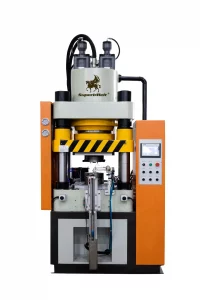 |
 |
 |
||
| Rated capacity | Ton | 200 | 200 | 300 | |
| Max. system pressure | Mpa | 25 | 20 | 25 | |
| Max. stroke of working table | mm | 200 | 200 | 200 | |
| Open height | mm | 400 | 300 | 300 | |
| Height of movable working table | mm | 800 | 1130 | 1180 | |
| Upward speed of movable working table | mm/s | 260 | 110-150 | 110-150 | |
| Returning speed of movable table | mm | 250 | 100-300 | 100-300 | |
| Movable working table size | L-R | mm | 500 | 560 | 560 |
| F-B | mm | 600 | 600 | 700 | |
| Overall dimension | L-R | mm | 1180 | 1730 | 1750 |
| F-B | mm | 1445 | 1694 | 1694 | |
| H | mm | 2600 | 2521 | 2611 | |
| Motor power | kw | 16 | 11-4level | 15-4level | |
| Weight (Approx.) | kg | 3200 | 4300 | 5200 | |
- Servo motor driven system
The product comes with servo motor driven system that is great for different speeds and pressure that is needed while pressing gold and silver coins. This feature also ensures that the machine moves stably and that the noise is controlled. The stability is as a result of the fact that it uses famous hydraulic components that are highly optimized for various environments and applications.
- PLC Control System
This is an innovative system that makes the machine highly reliable since it makes the operation a lot more convenient. This feature lacks in traditional hydraulic systems, hence making this machine worth investing in.
- Energy-saving effect
Most users prefer this product due to its excellent energy saving effect. The servo-driven pump technology makes this hydraulic pump one of the best on the market. Compared to the traditional hydraulic press systems, with this machine, you will save energy up to between 40 and 60%. Note that it has to be connected to a reliable source of electricity so that it functions optimally.
- Enhanced Productivity
The product relies on servo hydraulic control, and this makes it highly productive. Compared to the CNC pressing machine, with this machine, you will boost the productivity of your company by at least 40%, which means you will be far much ahead of your competitors.
- Straightforward Features
The product, though takes care of complex duties, it does not rely on highly complicated features to get the work done. The hydraulic coin press machine comes from seasoned manufacturers who understand the importance of user-experience, so they keep the features as simple and straightforward as possible.
- Compact Design
The machine, though delivers high power, comes in a compact design. This makes it ideal for both small and workspaces, and does not cost a lot of money to invest in. Its compact design might also make it ideal for remote operation as well as the learning process. SuperbMelt, for instance, takes advantage of its compactness to carry out various types of productions that need both low and high speed applications.
The machine is mainly used for the production of coins and nuggets such as gold, silver, copper, etc. Some commemorative coins, gold bar for sale, and handicrafts in the jewelry industry can all be produced with our hydraulic presses.
No matter you need a coin press as an auxiliary or you are a new in the minting industry, superbmelt can bring you great help, because we have a whole very experienced and mature coin making line solution. According to your factory’s output, finished product, metal, etc., we will recommend the most suitable and most efficient customized model for you.
The company provides mold customization services. By directly providing drawings or drawing by our designers, coin dies can be made and proofed before ordering machines.
We can provide matching molds, which can be customized according to the machine and customer’s products. Before buying the machine, we can make a sample of your design and press out the finished gold coin, and confirm it by taking pictures of the actual product or sending samples. This is more secure, and you don’t need to worry about errors caused by buying from two factories.
Why SuperbMelt Coin Press Machine



Any Question About SuperbMelt Hydraulic Coin Press Machine
Ultimate Hydraulic Coin Press Machine Buying Guide
How Coins Are Made: The Evolution of Coinage Manufacturing
1.1, Early Use of Hammers and Anvils
In the ancient days, people needed to find something to use a medium of exchange. Precisely, they needed things that they could easily carry and keep. They wanted coins. However, these coins were made from different materials such as metals, steel, gold, silver, platinum, etc.
Since there was no improved technology to make perfect coins, primitive techniques were used, such as hammers and anvils. Materials that were supposed to be made into coins were collected and taken to bases where the all work for done.
Hammers and anvils were then used to hit them into various desired shapes. The problem, however, is that they could not give them different values. In that case, the more you had, the more the commodity you could buy. Therefore, there was just the same value for all coins, at least until they could stamp them with different values, as we can see today.
1.2, Steam Power for Coinage
We will take a very brief look at how this process worked. Up to date, this is regarded as one of the most significant developments that took place at the turn of the 20th century. In 1810, a New Royal Mint was opened and equipped with steam-powered machinery acquired from Matthew Boulton, who was then a glorified entrepreneur.
The entire factory was packed with flywheels alongside ponderous lines of shafting. This was a true industrial age that made the making of coins a little easier. It features up to eight massive presses that were separated by columns of oak that stood robustly in the pressing room. All of them were operated by a ten-horsepower steam engine, and the noise was way too much. Each of them created coins at a speed of ten coins per minute. It was a true improvement at the speed at which the coins were made.
This machine was used in the 1800s and was a great achievement in the coinage industry. However, there was a need for further improvement, especially with the noise that was a major concern.
1.3, Minting Coins with Electricity and Automation
As already mentioned, there was a lot of concern with the use of horsepower and huge pressers to make coins. There was a need to minimize noise and improve automation. At least this was seen as a better way to make coins, and in large numbers within a short duration compared to the initial technology.
Some of the most notable benefits of minting coins with electricity and automation include increased substance reduction to enhance the value of materials used to make the coins. The process also ensures that you have the ability to etch and rinse the materials used to make coins so that you achieve a good level of value of products created.
The use of electricity and automation is a sure way to ensure that there is no dust available in the coins made. The use of electric processes made the process run faster because the machines are automated to get the work done as they rely on reliable sources of electricity. This process became quite common in the 20th century, and somehow, is still being used in some modern industries.
1.4, Making Coins by Press Machine
Today, quality is everything, and there is a need to use a machine. Press Machine is the latest innovation that is used to make top-quality coins.
Therefore, we are going to focus more on how gold coins and silver coins can be crafted with the help of a press machine.
SuperbMelt has always been on the front row when it comes to using the best technologies to create coins. The machine is energy sufficient, and no special skills are needed to operate it. Before you invest in this machine, it is vital that you consider talking to our agents so that we help you understand the core features of the machine and how you can benefit from it. Even if you need to know a few things here and there, you won’t need a lot of time to have that done.
Customized Coin Mold for Coin Press Machine
2.1, Production Process of Gold Coin Mold
As modern manufacturing technologies like CNC and 3D printing venture further into the world of industrial manufacturing, they also need to address the needs of companies that deal with precious metals in their production processes. CNC machining has become increasing popular among larger companies and artisan jewelers alike, who often use milling machines to carve or engrave detailed designs into pieces of metal jewelry. A CNC mill can also be used to carve wax for lost-wax casting projects. There are quite a few unique reasons why CNC can provide added value to one’s desired objects and make their operations stand out.
There are a bunch of ways that manufacturing systems can interact with precious metals. Subtractive and additive manufacturing systems can be involved in indirect ways, such as producing casts for molding as opposed to processing the actual metals. Indirect manufacturing is the safer option leading to less scrap but it takes longer and is more complicated.
CNC machines provide impressive accuracy and speed, which is especially beneficial because precious metals can be expensive, so one would want the most accurate parts possible. Luckily, metals such as gold, silver and most other precious materials are quite similar to more common metallic materials in terms of machining. This means that the process is not much different than it would normally be. While the CNC can be wasteful, the performance and ability to produce unique shapes are undeniable, particularly for an aesthetics-based industry like jewelry.
The main function of the coin mold is to press the blank gold coin or gold nugget into a designated pattern. Most of the time, when creating a coin mold, you will need a computer expert to design the best pattern that your final coin should have. This is why CNC Carving is needed to achieve the best precision.
2.2, How to Automatically Produce Gold Coins
In modern presses, a die strikes approximately 120 coins a minute. This rapid coining causes wear on the dies. Nickel alloys are among the main metals used in today’s coins but they are harder than other legacy coinage metals such as silver and gold alloys and therefore they cause even quicker die wear.
Copper and copper alloys have been used in coinage for centuries because of their malleability and the ease with which they can be coined: however, these too wear the dies when the dies are used for too long. An infamous example is the 1955 “poorman’s double die”. This coin is sold as a replacement for the 1955 doubled die, but it is no more than die-deterioration doubling, caused by wear on the dies. When a coin is struck, the planchet is not heated.
Although the planchet would be softer and more malleable, the extra time and expense would prove too great for the mint. Thus, the metal cold flows into the die under the high pressure.
Mistakes can happen at any stage of this manufacturing process, and these mistakes are something that certain collectors look for. Coin errors that occur on the die are generally more desirable than errors made at the time of the strike.
For example, a doubled die, where a date or another device appears twice slightly offset, is often a highly desired error. Strike errors are generally unique, whereas all coins struck with an error die will have the same characteristic. This makes them more easily collectible. The most famous doubled die in the past hundred years is the 1955 doubled die Lincoln cent.
These trade for hundreds of dollars because the error can easily be seen by a casual observer. Many doubled die errors require at least a jeweler’s loupe to be seen. Doubling can occur at the hub stage as well. Some more recent errors are hub doubled. Most famously, there is a 1995 doubled die cent that is hub doubled.
How to Choose the Tonnage of Hydraulic Press
Before you invest in making coins, you are supposed to learn how to understand how to use a hydraulic press. It is important for you to know that we provide all sorts of assistance, including how to choose the tonnage of a hydraulic press. However, we have included these details just in case you are unwilling to get in touch directly for one-on-one support.
3.1, Mini 1-2kg Induction Furnace for Sale
The tonnage of your hydraulic press machine plays a central role when it comes to making gold coins or coins of any other material. Note that what you need to make might differ from what you made the other time in terms of depth. Therefore, the tone must vary based on the embossing depth of your gold coins.
If you have a light workload to work on, it means there will be no real need for very high pressure on the blank gold coins, and that is where the trick lies. If you use too much force on rather light coins, you will be energy, especially when you have to take care of other expenses when making your coins. Besides energy, you might end up with a lot of inaccuracies when trying to come up with something that your client will love.
As a company, we would love for you to understand the process involved in calculating the tonnage required for various coins. This should be done in relation to the required embossing depth for your coins. That way, you will be able to reduce the chances of dealing with inaccuracies and other mistakes that might happen.
Even after that is done, the question regarding the effect of the stroke on the work should be taken care of. You don’t want a case where you deliver strokes that leave you with more work instead of making things easier for you.
3.2, By The Embossed Area of Gold Coins
When talking about the embossed area of gold coins, we are referring to the surfaces that you need embossed. The tone should vary in that if you are working on a large surface, the pressure should be concentrated evenly in the entire area, and this determines the amount of tonnage that you will end up applying on the coins.
Our coin press machine comes with features that can be used to regulate the amount if pressure applied on various coins based on the embossed surface. However, you must know that smaller surfaces tend to require additional force, and this means you will be using a little more tonnage to complete the task. Again, if you are not quite sure about how these things work, we are always here to assist.
3.3, By The Embossed Area of Gold Coins
Silver is naturally harder than gold, and steel is also way harder than silver. Therefore, you can see that you will need different tonnage to work on these metals. Gold coin press will be different compared to silver and steel coin presses, and you need to use different setups to achieve the most desired results without unnecessary inaccuracies.
When pressing gold, you won’t need a lot of pressure compared to pressing silver and steel, but other important factors might come into play, as mentioned before. We might be talking about the materials and also the surfaces that need to be worked on. Therefore, if you are unsure of anything in this regard, we are just a phone call away. Our experts will ensure that you get the best attention so that your project is not messed up.
Coin Press Buying Guide
There is nothing as costly as getting the wrong machine from manufacturers you know very little about. You will spend a lot of time pressing coins as well as dealing with a lot of errors. Also, you will have to spend a lot of money to work on maintenance costs, and the machine might even break up permanently before you get a return on investment. All these things might happen if you don’t take the right steps in choosing the right coin press machine. Go through this guide, and you will be happy with your investment.
- New or Used
When you are starting the business with less budget, you may consider purchasing a used machine. Definitely, a used machine costs much lower than the same quality new machine. Therefore, it reduces the startup capital investment in new business.
However, you must be doubly careful in purchasing a used machine. Check, whether the machine supplier provides a warranty or not. Check it carefully. In addition, check the company reputation in the machinery market.
- Production Output
This is one of the major criteria in purchasing a machine for your small business. In addition, you will need to compare the production output with the required utilities and price. Definitely, the perfect machine comes with maximum production output with minimum utility requirements in a reasonable price. And in the time of searching for the right machine, you will need to compare all these things with the production output.
- Price Comparison
This is another important factor in selecting the right machine. When you get different prices for the same machine, find out the reason behind it. Check every feature of the machine. However, never compromise with quality over price. While price is important in deciding what to purchase, the greater focus should be on quality and value.
- Manpower Engagement
Identify manpower engagement because you will need to pay for every man-hour that involves in operating the machine. The long-term success of the business hugely depends on the several cost factors. And you have to identify how much you are paying for per unit production.
Here we put an example of agarbatti making machine. Generally, there are two different types of machines. These are semi-automatic and fully-automatic. A semi-automatic machine demands a dedicated manpower for the operation. On the other hand, a single individual can operate at least 5 numbers of the fully-automatic machine at a time. And in that case, you get more production output with minimum manpower utilization.
- Space Requirement
You must know how much space the machine takes in installation and operation. Generally, after the installation, you will need to provide some extra space for the operational activity. So it is important to know the exact space requirement before putting the final order. In addition, check whether you can provide the required space or not.
- Power Requirement & Consumption
This is an another important consideration in the purchasing machine for your manufacturing business. If the machine requires a domestic phase to operate than it is good. Otherwise, you will need to arrange the commercial electricity from the Electricity Board. And definitely, it is time-consuming. In addition, it demands investment.
Furthermore, check the consumption rate of the machine. Check it for 8 hours’ operation. Because you will need to calculate the cost of energy involves in the production.
- Warranty Period
Check the warranty period before placing the final order. In addition, check it in detail. What are the parts that come with the warranty and what don’t? In addition, check the service fees structure after the warranty period. Because you will need to pay the machine company for every service issues in future.
- Installation & Training
Check whether there is any installation charge. Generally, maximum companies provide the installation service free of cost. However, some of the companies take charges for installation. Check it out.
In addition, ask them to provide an on-site training to your employees. Even the company asks for fees for it this is worth giving. Note that SuperbMelt has all the things that we have mentioned above, and we believe that we might be the company you are looking to buy from. If you come to our company, we will provide on-site training on how to use any of our machineries that have interest in buying. Note that the learning curve is not long and you will be ready to start using your newer machine to make gold coins and earn profits.
FAQ Guide of SuperbMelt Coin Press Machine
- 1. How Long Does It Take to Make a Coin?
- 2. How Do You Tell if a Coin is a Proof?
- 3. How do You Make Medieval Coins?
- 4. How Do You Make a Coin Die?
- 5. How Can I Make My Own Coins at Home?
- 6. How are Coins Pressed?
- 7. Does The Equipment Supplier Give Easy to Understand Manual or Guide?
- 8. Is Line Coin Press Automated?
- 9. Does The Coin Press Offer Protection Against Material (Gold/Silver)?
- 10. How to Maintain a Safe Workplace?
- 11. Is the Line on Coin Minting Environmentally Friendly?
- 12. Why is Gold Coin Investment So Popular?
- 13. Is Your Machinery Manufactured by a Well-Known Manufacturer of High-Quality Machines?
- 14. How many tons of Hydraulic Presses are needed to Make 1 Ounce of Gold Coins, and What is the Output of your Machines?
- 15. How to Make Coin Reed?
1. How Long Does It Take to Make a Coin?
Some coins take longer than 10 days, while others can be completed and delivered within just three days. Things that can extend the length of production are options like 3D designs, dual plating and colorfilling. 3D coin molds take longer to machine than 2D molds, and dual plating can take twice as long as the single plating process.
Coins with a large number of individual colorfill areas will take more time as well since each colorfill area is completed individually. Things that help shorten production time are choosing 2D and bare metal designs that do not require special plating or painting. These types of coins can be finished and shipped out within one or two days.
2. How Do You Tell if a Coin is a Proof?
The Chinese Mint recognizes a proof coin as “a specially made coin distinguished by sharpness of detail, usually with a brilliant mirror-like surface.” However, proof does not necessarily indicate the condition of the coins, but rather the way in which the coins are produced or manufactured. Proof coins are struck at least twice and treated with special dies which make their features more defined, detailed, and glossy. The quality of both proofs and uncirculated coins are graded. The condition of a proof is graded on a number scale, with PR 60 being perfect condition. The lower the proof grade is, the more wear or handling the coin shows. The main reasons to buy proof coins are:
Appearance
Proof coins are struck twice instead of just once like regular coins, but this one extra strike gives the coins a much shinier, clean-looking finish and makes the intricate details of the design pop. Most proofs can be identified by their mirror-like background. This attractive presentation is one of the most popular qualities of proofs.
Scarcity
Because of the extra time and effort, the Mint must spend to produce proofs compared to regular coins, and since raw coins tend to represent the bulk of coin sales, there are usually fewer proofs made. In fact, only 5-20% of the total amount of uncirculated coins produced in a series are proof, making them much rarer.
Collectability
With their high-quality presentation and rarity, proof sets are often sought after by collectors. This collectability is one of the best qualities of proofs. They make great gifts for holidays or birthdays.
Value
Generally speaking, proof coins have a higher relative mark-up than uncirculated coins. As a collector’s item, proofs can be sold for more than the value of the raw precious metals they contain. However, the downside is they cost a little more than uncirculated coins to purchase.
3. How do You Make Medieval Coins?
The Middle Ages. Up until the 1660s, English coins were struck between a pair of hand-held dies. The pile, or lower die, had a spiked end to enable it to be driven firmly into a block of wood; a blank was placed on top of the pile, and above it was held the trussel or upper die.
This kind of work was mainly done since there were no improved machines to come up with top-quality coins like the ones we see today. Therefore, it is accurate to state that while most of these coins really had high value, due to the materials from which they were made, they would not have such value today unless they are further refined. The medieval coins are best described today and primitive, but when refined, the value is tremendous.
4. How Do You Make a Coin Die?
All coins struck in the United States are struck by a pair of dies. A die is a steel rod with a face that is the same size as the coins that it will be striking. This steel rod will contain the design for one side of the coin. Two of these steel rods (dies) are needed to strike coins. One will have the obverse (front of the coin) design, and the other will have the reverse (back of the coin) design.
The dies are set up in a coining press machine so that a planchet (blank) will come between them. In the older coining presses, one die would be positioned above the other. The upper die (hammer die) would come down with great force and strike the planchet while it was resting on the lower die (anvil die).
5. How Can I Make My Own Coins at Home?
You can easily create your coins at home without breaking a sweat. You will begin b creating a life-sized paper drawing on your preferred coin design. If you like, you can hand-draw or design it on a computer. From there, you want to create a mold for your coin in earthenware clay. Make sure to let the clay dry fully so that you have a perfect mold for your coin.
Note that this will need a few hours, and then you will coat your new mold using a fine layer of cooking oil. This will ensure that your coin does not stick to the mold. Hand-condition your piece of clay and use your hands to make it soft. You need to create a disc shape from the metal clay and then roll the clay to form a small ball and have it pressed against your work surface.
Place one side of the disc shape right against your earthenware mold and peel the coin away from the mold after pressing it gently over the whole back of the disc with your thumb. Remove any excess metal that your piece might have so that you are left with something perfect.
6. How are Coins Pressed?
Now that the planchets have been properly prepared, softened, and cleaned, they are now ready for striking. Business struck coins are automatically fed into the coining press at a rate that can reach several hundred coins per minute. Proof coins made for collectors are fed by hand into the coining press and receive at least two strikes per coin. Just like we have already stated above, the coining press works with different tones, and you need to ensure that yours is correctly set.
For instance, the amount of force or tone applied will be determined by a number of factors, such as the size of coins, the materials, and the working surface. Understandably, some of these things might sound technical for you, but that will end as soon as you get in touch with SuperbMelt. Our experts prefer working with clients like you to ensure that they understand everything regarding coin pressing. Therefore, it would be prudent of you to talk to us before you start working on your coins.
7. Does The Equipment Supplier Give Easy to Understand Manual or Guide?
At SuperbMelt, we believe in quality and reliability. Also, we want to see that our clients don’t face any challenge while using our products. Therefore, once you have purchased our coin presser, we deliver a detailed guide on how the product works to get peace of mind while using it to produce high-quality products.
Therefore, the most direct answer to the question is yes. Though we are convinced that the manual is enough to help you know how to operate the equipment, we are more than willing to do a lot more. For instance, our support team is up and working at all times. You can talk to us by sending us a direct email or talking to our representatives using the live chat on our official website.
With all these, we believe that you will be getting any form of support that you might need before and after buying our equipment.
8. Is Line Coin Press Automated?
As we have already said, we have some of the best machines in store just for you. Also, we know that technology keeps getting better and that our machines must be upgraded on a regular basis. Therefore, to help you meet the high demand for gold and silver coins, for you, we have automated gold press, and we do sell our equipment at the most competitive prices.
Therefore, feel free to hit us up for any additional information about our automated gold press machines. Note that there is a lot of them, and some of their features might vary, but all that will be explained amid purchase.
9. Does The Coin Press Offer Protection Against Material (Gold/Silver)?
Safety should, and must be one of your top priorities when buying any gold press machine from the dealers of your choice. This implies that when pressing metals, there are potential accidents that might happen, and you need to be protected from all of them. Therefore, when buying equipment from us, we want you to entrust your safety to our equipment.
It does come with features put in place to ensure that you are not getting any physical injury when pressing gold coins. You will be getting more than just a pleasurable application experience. You will see that they come in a design that gives your safety a good level of priority.
10.How to Maintain a Safe Workplace?
Train employees well
Comprehensive training is a must for preventing workplace injury. Make sure that all of your employees have access to – and complete – all safety training for their positions.
Reward employees for safe behavior
Rewards are an easy way to encourage workplace safety. Giving out small rewards to employees who follow safety policies keeps them engaged, which can make a big difference in reducing workplace injuries.
Partner with occupational clinicians
As mentioned above, occupational medicine clinicians can provide valuable insight into workplace injury and prevention. These clinicians can help you prevent workplace injuries by visiting your worksite and identifying areas where there’s a high risk for employee injury. Physical and occupational therapists can also improve workplace ergonomics and develop human performance evaluations to help you screen candidates for physically demanding roles and aid in the return-to-work process.
Use labels and signs
Labels and signs are a cheap and effective way to communicate important information quickly. They’re usually simple and rely on pictures to detail hazards and proper procedures. These tools are good reminders and warnings for even the most experienced worker.
Keep things clean
A messy workplace can lead to unnecessary accidents. Make sure boxes are stacked safely, and spills are cleaned up quickly. Conduct regular inspections to check for potential dangers such as tangled cords, messy floors, and disorganized tools. Programs like 5S often provide beneficial improvements in organizations that can lead to reduced clutter.
11. Is the Line on Coin Minting Environmentally Friendly?
Yes, the line on coin minting is 100% environmentally friendly, and this is one of the things we take seriously when coming up with the best equipment for our clients worldwide. Before you make any purchase, we will test and confirm to you that we only employ safe processes, so you won’t have to worry about interfering with the environment in any weird way.
12. Why is Gold Coin Investment So Popular?
The fact is that gold coins serve a wide range of purposes, and this explains why they have become quite popular these days. They are used in electronics and computers, dentistry and medicine, medals and statuses, and to make jewelries. Gold coins have high values around the globe, which is why they are preferred when it comes to making items that are sold at very high prices.
13.Is Your Machinery Manufactured by a Well-Known Manufacturer of High-Quality Machines?
SupebMelt is not your new dealer in the market. Through the years, we have worked with clients from different parts of the globe. Some of them want complex features, while some are easy to deal with.
This has taught us that client satisfaction must be a top priority for any company looking to gain significant market strength. Therefore, our equipment is created by our experts, and they ensure that they undergo rigorous testing. Therefore, we do have top-quality machinery that you can use to beat competition regardless of how stiff it might be.
14. How many tons of Hydraulic Presses are needed to Make 1 Ounce of Gold Coins, and What is the Output of your Machines?
1 ounce needs to use more than 150 tons. When your production capacity is large, you can also consider 300 tons or use an automatic model.
We have the choice of automatic and manual machines. The manual model can reach more than 2,000 pieces a day, and the automatic model can reach 8,000-10,000 pieces a day.
15. How to Make Coin Reed?
In order to increase the beauty of the coin and make it anti-counterfeit, many mints will emboss a circle of gears on the third side of the coin. This process needs to be completed with a coin rimming machine.
Before a blank coin is pressed, it is usually necessary to use a coin rimming machine to create a curvature on the edge of the coin, so that it is not easy to produce capes or burrs when the coin is pressed.
At the same time, it can also reduce the diameter of the coin, so that there is a reasonable gap between the blank coin and the mold with gears, and fill the entire mold at the moment of pressing down to form a perfect coin.

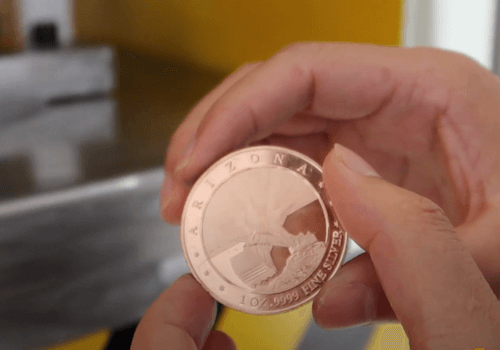
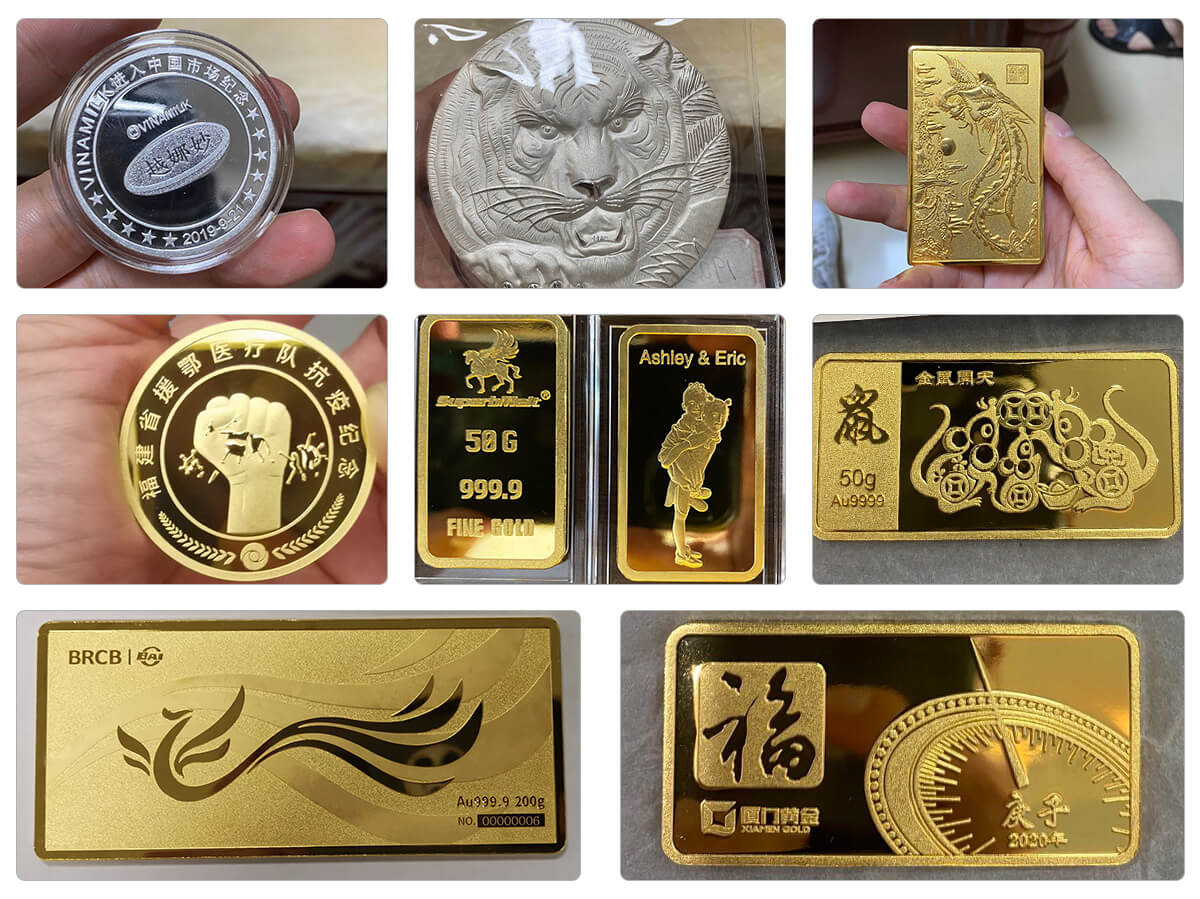


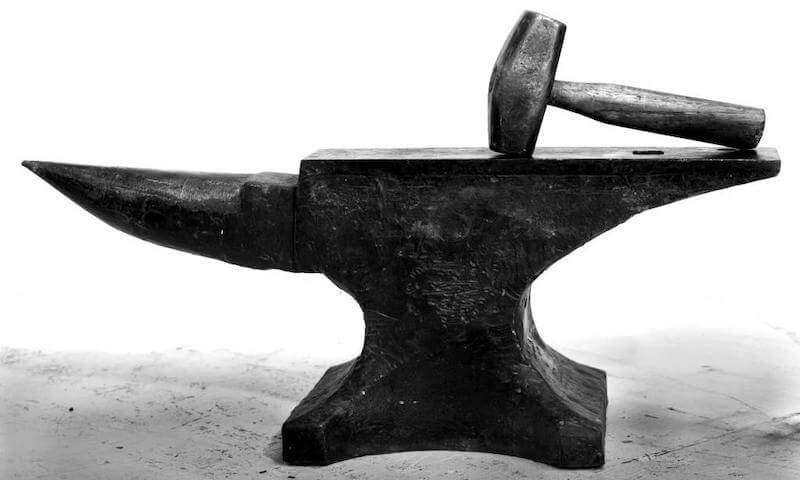

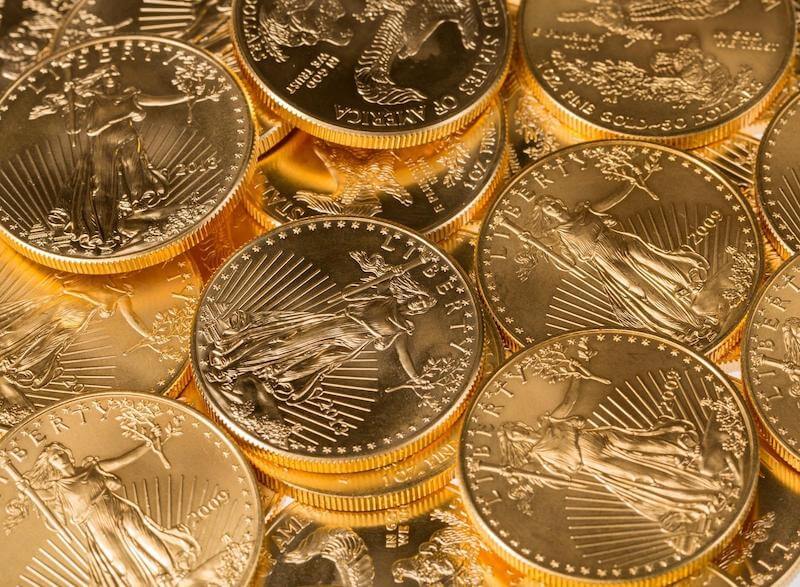

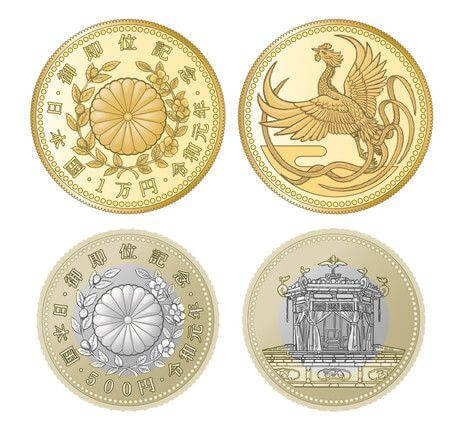
 © Copyright 2008-2021 Superb Electromachinery Co., Limited
© Copyright 2008-2021 Superb Electromachinery Co., Limited